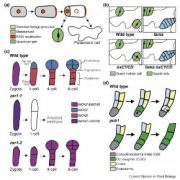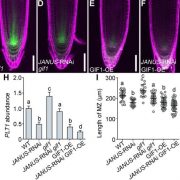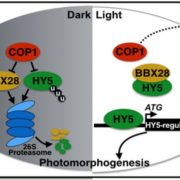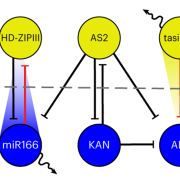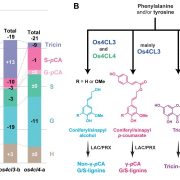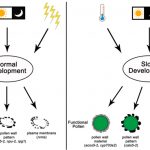Cell-cell adhesion in plant grafting is facilitated by b-1,4-glucanases (Science) ($)
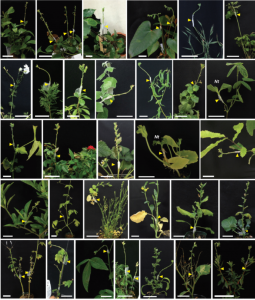 Plant grafting has been used in crop improvement for centuries and more recently to study systemic and long-distance signaling in the plant vascular system. In order to better understand graft compatibility and its mechanism, Notaguchi et al. used Nicotiana to study interfamily graft combinations. Interfamily grafting between Nicotiana and Chrysanthemum morifolium (Cm, family Asteraceae) was successful and the plants survived through seed setting. By contrast, interfamily grafting between Cm and Glycine max (Gm, family Fabaceae) was not successful and the Gm scions died. A necrotic layer at the graft boundaries in the unsuccessful grafts was observed but was only weakly visible in the successful graft of (Cm/Cm and Nb/Cm). These results suggest that Nicotiana is cable of grafting with phylogenetically distant plant species and demonstrated interfamily cell-cell adhesion. Out of 84 species from 42 families studied, Nicotiana established graft with 73 species from 38 families. Early upregulated genes in the Nb scion were genes encoding cell wall modifying enzymes, suggesting a role of cell wall modification. One of them is NbGH9B3 encoding β-1,4-glucanase. Virus-induced gene silencing of NbGH9B3 caused failure of Nb/At interfamily grafting. CRISPR/Cas9 knock out of NbGH9B3 also led to reduced interfamily grafting in Nb/At, demonstrating that β-1,4-glucanase encoded by NbGH9B3 facilitates graft establishment in Nicotiana interfamily grafting. (Summary by Toluwase Olukayode @toluxylic) Science 10.1126/science.abc3710
Plant grafting has been used in crop improvement for centuries and more recently to study systemic and long-distance signaling in the plant vascular system. In order to better understand graft compatibility and its mechanism, Notaguchi et al. used Nicotiana to study interfamily graft combinations. Interfamily grafting between Nicotiana and Chrysanthemum morifolium (Cm, family Asteraceae) was successful and the plants survived through seed setting. By contrast, interfamily grafting between Cm and Glycine max (Gm, family Fabaceae) was not successful and the Gm scions died. A necrotic layer at the graft boundaries in the unsuccessful grafts was observed but was only weakly visible in the successful graft of (Cm/Cm and Nb/Cm). These results suggest that Nicotiana is cable of grafting with phylogenetically distant plant species and demonstrated interfamily cell-cell adhesion. Out of 84 species from 42 families studied, Nicotiana established graft with 73 species from 38 families. Early upregulated genes in the Nb scion were genes encoding cell wall modifying enzymes, suggesting a role of cell wall modification. One of them is NbGH9B3 encoding β-1,4-glucanase. Virus-induced gene silencing of NbGH9B3 caused failure of Nb/At interfamily grafting. CRISPR/Cas9 knock out of NbGH9B3 also led to reduced interfamily grafting in Nb/At, demonstrating that β-1,4-glucanase encoded by NbGH9B3 facilitates graft establishment in Nicotiana interfamily grafting. (Summary by Toluwase Olukayode @toluxylic) Science 10.1126/science.abc3710


